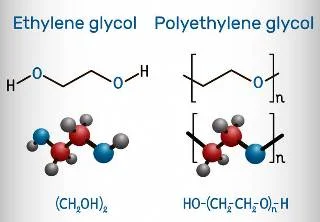Monomer
A monomer is a molecule that can be bonded to other identical molecules to form a polymer. In the other words, a monomer is a molecule of any of a class of compounds that is mostly organic and can react with other molecules to form very large molecules or polymers. The main feature of a monomer is polyfunctionality and the capacity to form chemical bonds with at least two other monomer molecules. Bifunctional monomers can form only linear, chainlike polymers, but monomers of higher functionality yield cross-linked network polymeric products. The additional reactions are characteristic of monomers with a double bond between two atoms or a ring of three to seven atoms; Examples include styrene, caprolactam, butadiene, and acrylonitrile.
There are two types of monomers. Such as-
Synthetic monomers
i.
Ethylene gas (H2C = CH2) is the monomer of polythene.
ii.
Other modified ethylene derivatives include:
a.
Tetrafluoroethylene (F2C = CF2) which leads to Teflon
b.
Vinyl chloride (H2C = CHCl) leads to PVC
c.
Styrene (C6H5CH = CH2) leads to
polystyrene
iii.
Epoxide monomers can be cross-linked by themselves or by adding a co-reactant
to form epoxy
iv.
BPA is the monomer precursor of polycarbonate
V.
Terephthalic acid is a comonomer that forms polyethylene terephthalate with
ethylene glycol.
vi.
Dimethyl silicon dichloride is a monomer that is given to polydimethylsiloxane
after hydrolysis.
vii.
Ethyl methacrylate is an acrylic monomer that combines with acrylic polymers to
form catalysts and to make acrylic plastics used to make artificial nail
extensions.
Natural monomers
Some
of the main biopolymers are listed below:
i. Amino acids
Amino
acids are organic compounds that contain the functional groups of amino (–NH2)
and carboxyl (–COOH) with a specific side chain (R group) for each amino acid.
In the form of proteins, amino acid residues make up the second-largest
component of human muscle and other tissues. Beyond their role as protein
residues, amino acids also participate in many processes such as
neurotransmitter transport and biosynthesis. Typically, about 20 types of amino
acids are used to make monomer proteins. So proteins are not homopolymers.
ii. Nucleotides
Monomers
are nucleotides for polynucleic acids (DNA / RNA), each made up of pentose
sugar, a nitrogenous base, and a phosphate group. Nucleotide monomers are found
in the cell nucleus. Four types of nucleotide monomer DNA are the precursors
and four different nucleotide monomer RNA are the precursors.
iii. Glucose and related sugars
For
carbohydrates, monomers are monosaccharides. The most abundant natural monomers
are called glucose, which is bound to polymer cellulose, starch, and glycogen
by glycosidic bonds. During photosynthesis from water and carbon dioxide, glucose
is mainly produced by plants and most algae, using energy from sunlight, where
it is used to make cellulose in cell walls, the most common carbohydrate. In
energy metabolism, glucose is the most important source of energy in all living
things. Glucose is stored as a polymer for metabolism, mainly in plants as
starch and amylopectin, and in animals as glycogen. Glucose is circulated in
the blood of animals as blood sugar.
iv. Isoprene
Isoprene
is a common organic compound with the formula CH2 = C (CH3) −CH = CH2. In its
pure form, it is a colorless volatile liquid. It is an unsaturated hydrocarbon.
It is produced by many plants and animals and its polymers are the main
component of natural rubber. It is the most measurable measure of human
respiration. The approximate production rate of isoprene in the human body is
0.15 µmol / (kg. h), equivalent to about 17 mg/day for a person weighing 70 kg.
It is common in low concentrations in many foods.









0 Comments